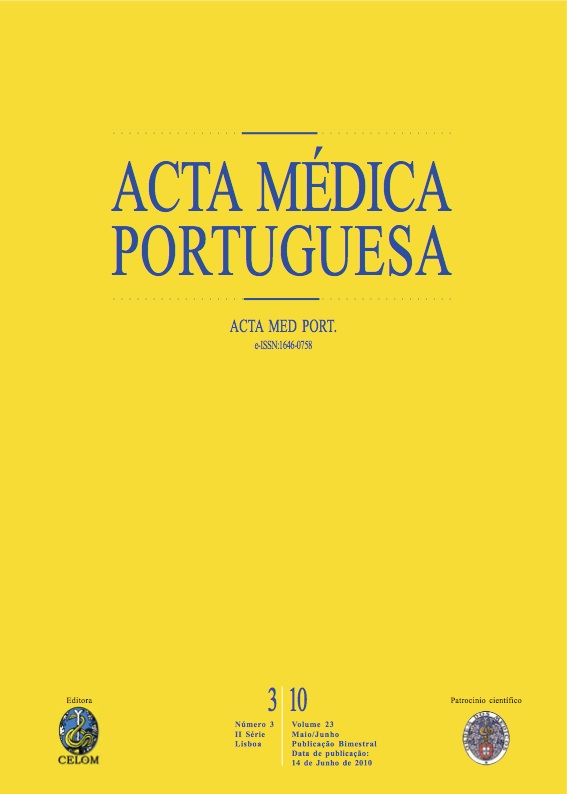Transmissão perinatal do vírus da hepatite C - Hospital Santo André, Leiria 2002-2006.
DOI:
https://doi.org/10.20344/amp.641Resumo
Vertical transmission of hepatitis C virus (HCV) is the main route of infection in children, occurring in few cases (five percent). Current recommendations for HCV screening include first anti-HCV testing at age > 18 months, reducing false positives and false negatives. Positive results must be confirmed by the presence of HCV RNA on two different occasions.To characterize the population of children born to HCV-positive mothers, to identify risk factors for perinatal HCV transmission and to improve the approach to HCV screening.The study was conducted in two phases. An analytic retrospective study enrolling children born to HCV-positive mothers between January 2002 and December 2006 was done, followed by a transversal analysis in order to repeat anti-HCV testing, in cases that didn't meet current recommendations for HCV screening and in those without any HCV screening.Fifty-nine children born to HCV-positive mothers in a total of 12 985 births were included, corresponding to a prevalence of 0,45%. A high rate of inadequate pregnancy surveillance, prematurity and low birth weight, mainly in children born to addicted mothers was found. A child with HCV infection without any risk factor for perinatal transmission was found. Among children with negative anti-HCV at age 18 months, half had done anti-HCV prior to nine months of age, all were positive. Children discharged because of negative anti-HCV at nine months of age were called in a second phase of the study, for new anti-HCV at age > 18 months. All were negative.Perinatal HCV transmission rate was 2,9%. There was no identified risk factor for perinatal transmission in the single case of HCV infection. A high rate of prematurity, low birth weight and inadequate surveillance of pregnancy was found, with statistical significance to relation with mother addiction. Regarding anti-HCV at age < 18 months, a high rate of false positives but no false negative results were found. This study has enabled the detection and correction of mistakes in the approach to HCV screening.Downloads
Downloads
Como Citar
Edição
Secção
Licença
Todos os artigos publicados na AMP são de acesso aberto e cumprem os requisitos das agências de financiamento ou instituições académicas. Relativamente à utilização por terceiros a AMP rege-se pelos termos da licença Creative Commons ‘Atribuição – Uso Não-Comercial – (CC-BY-NC)’.
É da responsabilidade do autor obter permissão para reproduzir figuras, tabelas, etc., de outras publicações. Após a aceitação de um artigo, os autores serão convidados a preencher uma “Declaração de Responsabilidade Autoral e Partilha de Direitos de Autor “(http://www.actamedicaportuguesa.com/info/AMP-NormasPublicacao.pdf) e a “Declaração de Potenciais Conflitos de Interesse” (http://www.icmje.org/conflicts-of-interest) do ICMJE. Será enviado um e-mail ao autor correspondente, confirmando a receção do manuscrito.
Após a publicação, os autores ficam autorizados a disponibilizar os seus artigos em repositórios das suas instituições de origem, desde que mencionem sempre onde foram publicados e de acordo com a licença Creative Commons









